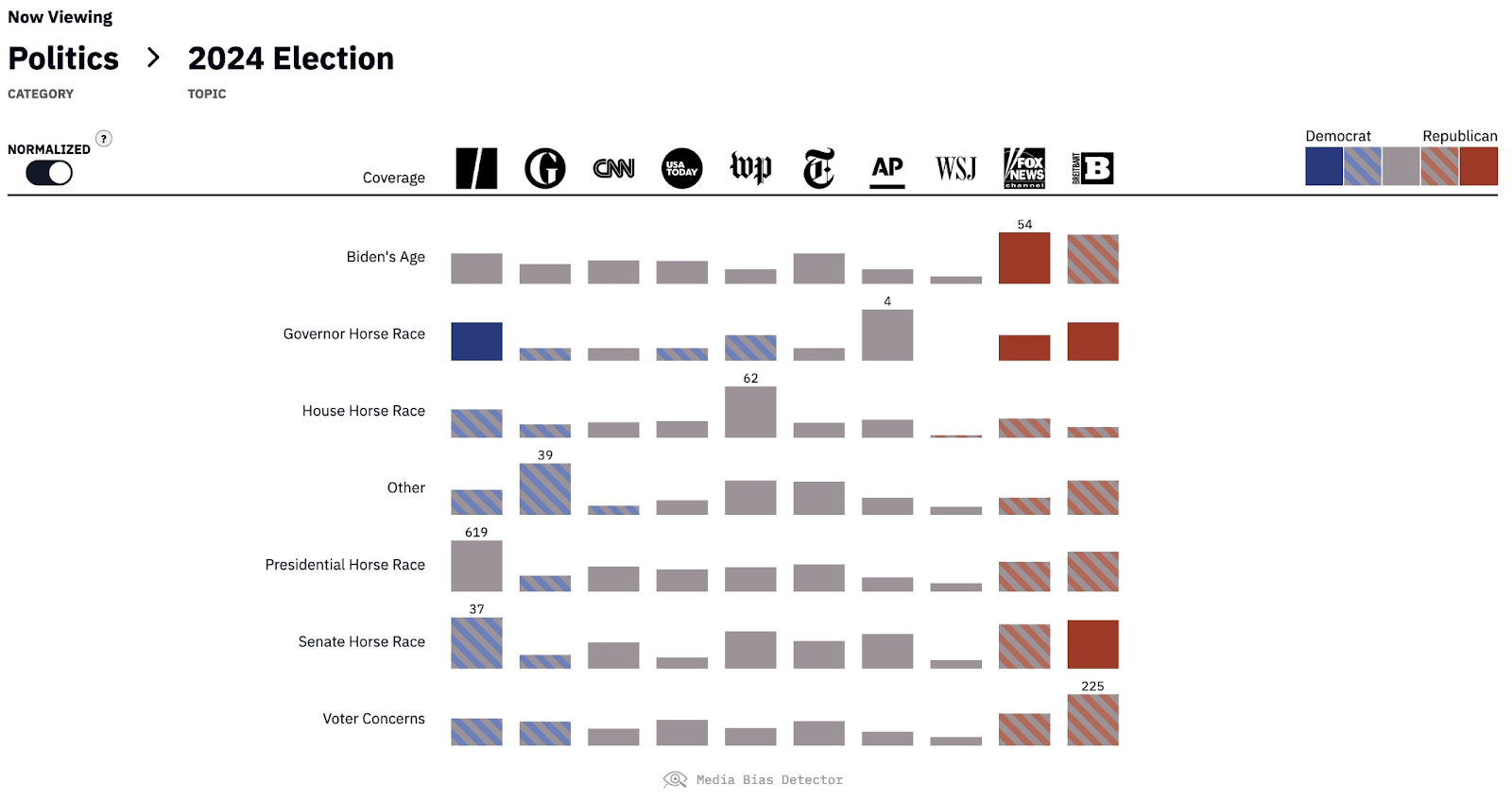In this election season, media bias is everywhere. When looking to stay informed about political issues in the digital age, it is vital to understand the 16 types of media bias. For new and experienced voters alike, navigating the flood of political news and learning to spot bias as well as misinformation can be a challenge.
To analyze what bias looks like in different news sources across the political spectrum, I read 5 articles from news outlets ranging from left-wing to right-wing covering the same story of Presidential nominee Kamala Harris’s recent town hall meeting in Pennsylvania broadcasted by CNN, observing the differences in language and framing of the story across differing sources.
Left: Vox
“‘How ‘Trump is a fascist’ became Kamala’s closing argument” by Vox news writer Christian Paz features several types of bias. In the article, the writer highlights the shift between Harris’s previous more lighthearted campaign strategy to the more serious campaign strategy she portrayed during the town hall event, claiming that Trump is a threat to democracy. This approach frames the article to emphasize the faults of Trump and the dire need for people to vote blue as the election date of November 5 gets closer. Similarly, In the subtitle of the article, the author writes “Brat summer is over; “Trump is a fascist” fall is in”, subtly appealing to young voters, who generally favor democrats, through pop culture references.
Lean Left: CNN
Titled “Takeaways from Kamala Harris’ CNN town hall”, the CNN article includes elements of media bias such as word choice, framing, and spin. When discussing Harris’s economic policy and desire to work with the private sector to solve public issues, the writer states that Harris works “assimilating traditionally moderate Republican rhetoric” in her economic plan. This language and observation works to emphasize the bipartisanship of Harris’s policies, potentially overstating the extent of her bipartisanship to appeal to republican or undecided voters. Along with this, the article features word choice such as “law and order” in connection to claims about Harris shifting her perspective on key political issues since her presidential campaign started, highlighting her career as a prosecutor.
Center: The Hill
Titled “Democrats give Harris rocky reviews on CNN town hall”, the article features slight bias in unsubstantiated claims and spin, but no substantial prevalent forms of media bias. In the article, the writer states “the prospect of another debate against Trump appeared unlikely” when referring to Harris’ decision to attend the town hall, however provides no context as to why another debate with former president Trump would be unlikely. This has the effect of portraying Trump in a negative light without taking into account potential reasons that another presidential debate between the candidates could not occur. Similarly, when discussing Harris’s response to a question regarding the Israel-Palestine conflict, the writer stated that Harris “returned to her typical talking points” as a substitute for the word “said”, suggesting that Harris’s responses on this topic are repetitive.
Lean Right: The Washington Times
The Washington Times article “Kamala Harris’ Town Hall: Four Memorable Moments” covers key takeaways of the broadcast from a leaning politically right wing perspective. This article portrays prevalent media bias in the form of opinion statements presented as facts, slant, mind reading, and more. When discussing Harris’s rise to presidential nominee subsequent to Biden dropping out of the presidential race, the writer uses dramatized language of “catapult[ing] to the top of the democratic ticket”. This use of language stirs the emotions of the reader and fails to account for the long political history of the presidential candidate, as previous Vice President of the United States as well as California Attorney General and Prosecutor, undermining her qualifications for the role of president. Along with this, when reporting on Harris’s answer to a town hall question about her greatest weakness, the writer describes her response as a “classic political dodge”, stating their opinion as fact and subjects Harris to the commonly held negative public perception of politicians.
Right: Fox News
“’Admires dictators’: Harris continues comparing Trump to Hitler during battleground state town hall” by Fox News reporter Emma Colton reports on the recent Town Hall CNN broadcast from a right-wing point of view. Immediately following a quote of Harris responding “Yes, I do, Yes, I do” to a question about if she would consider Donald Trump to be a fascist. Colton states, “Harris’ comments come after Trump survived two assassination attempts on his life since July. Trump has blamed the attacks on heated rhetoric from Democrats”. This use of story placement builds a false connection between Harris’s comments to the assassination attempts of Donald Trump in recent months.
Media bias is prevalent on all sides of the political spectrum. Through understanding what different types of bias look like and the effects of the bias on readers, people can avoid being fooled by media bias and fake news, better understanding the current political landscape. In order to gain a strong understanding of political topics, it is vital that readers analyze news from different perspectives and sources.


Leave a Reply